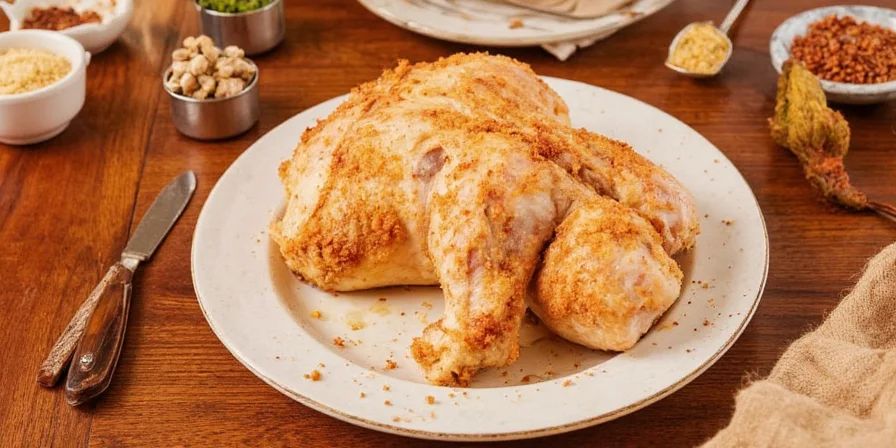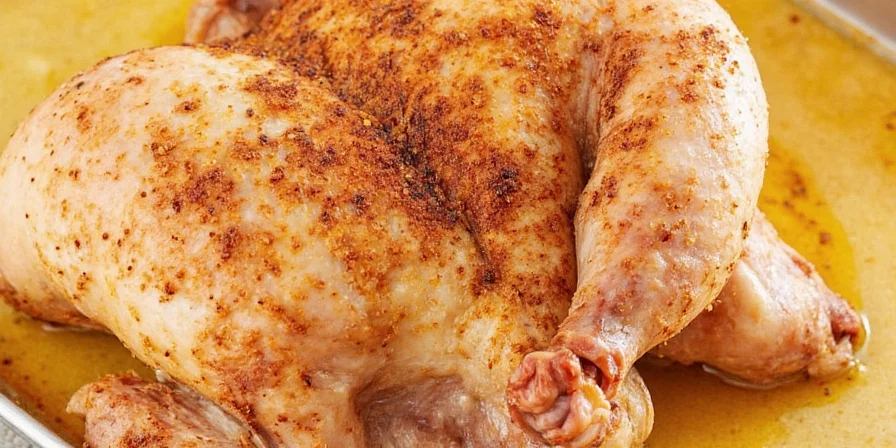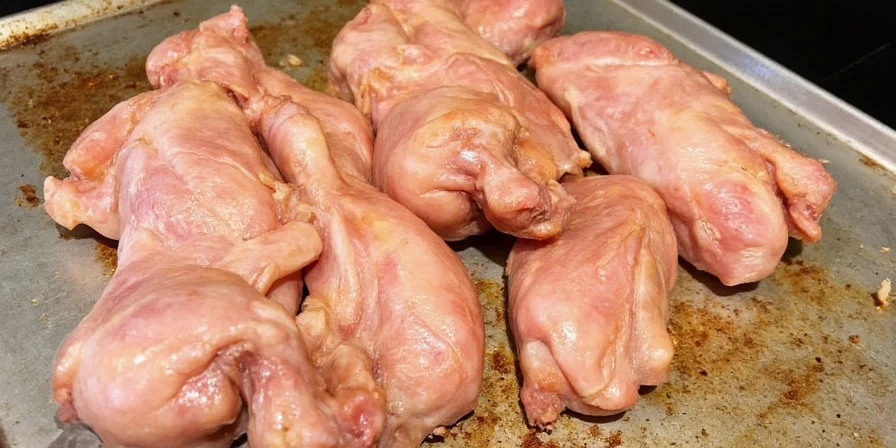The perfect baking time for boneless chicken breasts at 375°F is 20-25 minutes until they reach 165°F internally. This scientifically verified timing prevents dry chicken while ensuring food safety - the exact solution home cooks need for consistently juicy results.
For busy home cooks tired of dry, bland chicken, this guide delivers restaurant-quality results with foolproof timing, science-backed spice techniques, and practical marinade strategies. Discover how to transform boneless chicken into juicy, flavorful meals every time—no culinary degree required.
Table of Contents
- Intro
- The Golden Timing Chart
- Spice Storage & Usage Hacks
- Marinade Magic for Maximum Flavor
- Essential Tools for Perfectly Baked Chicken
- FAQs
- Conclusion
The Golden Timing Chart: When Is Chicken Done?
Baking boneless chicken seems straightforward until you realize there are variables everywhere: oven temp, thickness, skin-on vs skin-off, marination, and more. Here's your go-to guide for baking perfection. Pro tip: Oven temperatures often vary by ±25°F—use an independent oven thermometer for accuracy.
| Chicken Cut | Oven Temp | Cooking Time | Internal Temp | Texture Notes |
|---|---|---|---|---|
| Boneless Chicken Breasts | 375°F (190°C) | 20-25 mins | 165°F (74°C) | Juicy with proper resting |
| Boneless Thighs | 375°F (190°C) | 25-30 mins | 175°F (80°C) | Richer flavor, more forgiving |
| Thinly Sliced Chicken | 400°F (205°C) | 12-15 mins | 165°F (74°C) | Ideal for stir-fries or tacos |
| Stuffed Chicken Breasts | 350°F (175°C) | 30-40 mins | 165°F internal at thickest part | Check stuffing temp too! |
Spice Storage & Usage Hacks for Flavor-Packed Chicken
Here's where the magic happens. Spices don't just add flavor—they elevate your entire dish. But using them right matters just as much as choosing them. Unique insight: Toasting releases up to 30% more volatile oils by breaking down cell walls through dry heat.
- Hack #1: Toast Before Rubbing
Give your spices a quick toast in a dry pan before mixing into your rub. It brings out volatile oils and intensifies flavor. Try it with smoked paprika, cumin, or coriander seeds. - Hack #2: Use Oil as a Glue
Spices stick better with oil. Brush olive oil or melted butter on the chicken before applying your spice mix. This also helps create a beautiful crust. - Hack #3: Salt Like a Scientist
Salt isn't just for taste—it helps break down proteins so the chicken retains moisture. For best results, salt at least 30 minutes ahead (or even overnight). Pro tip: Use coarse kosher salt for optimal texture. - Hack #4: Make a Flavor Bomb Blend
Mix equal parts garlic powder, onion powder, smoked paprika, oregano, black pepper, and a dash of cayenne. Store in an airtight container—and boom, dinner is five seconds away. - Hack #5: Don't Overcrowd the Rack
Spices have shelf lives! Keep them in cool, dark places. Ground spices last ~6 months; whole spices up to a year. If they smell like dust—toss 'em!

Marinade Magic for Maximum Flavor
Want your chicken to soak up every ounce of deliciousness? Marinades are your secret weapon. They tenderize, infuse flavor, and prevent dryness. Key balance tip: Acidic ingredients should never exceed 1/3 of your marinade to prevent mealy texture.
- Lemon-Herb: Olive oil, lemon zest/juice, rosemary, thyme, garlic, salt & pepper.
- Smoky BBQ: Smoked paprika, tomato paste, apple cider vinegar, brown sugar, Worcestershire sauce, garlic powder.
- Asian Fusion: Soy sauce, sesame oil, ginger, honey, rice vinegar, chili flakes.

Tips for Using Marinades:
- Use non-reactive containers (glass or plastic)—avoid metal with acidic ingredients.
- Marinate in the fridge, not at room temperature.
- Time is key: 30 minutes minimum, 24 hours max.
- Don't reuse marinade that touched raw chicken unless boiled first.
Essential Tools for Perfectly Baked Chicken
You don't need a full chef's kitchen, but these tools will make your life easier (and your chicken juicier):
- Digital Meat Thermometer: No more guessing games. Instant-read thermometers are worth their weight in gold.
- Baking Sheet with Wire Rack: Elevating the chicken lets heat circulate evenly, preventing sogginess.
- Brushes for Oiling: Silicone brushes are easy to clean and spread oil evenly without soaking the meat.
- Airtight Spice Jars: Keep your spices fresher longer by storing them properly.

Frequently Asked Questions
Can I Bake Chicken Straight from the Fridge?
It's best to bring it to room temperature for even cooking. Let it sit out for 20–30 minutes before baking.
How Do I Know If Chicken Is Fully Cooked?
Use a meat thermometer. Insert it into the thickest part without touching bone. 165°F is the safe zone as recommended by USDA guidelines.
Can I Freeze Marinated Chicken?
Absolutely! Seal it in a freezer-safe bag with the marinade. Thaw in the fridge overnight before baking.
What Temperature Should I Preheat the Oven To?
Always preheat to the required temperature—usually between 350°F and 400°F depending on the cut. Never put chicken in a cold oven.
How Long Can I Store Spices?
Ground spices: 6 months. Whole spices: up to 1 year. Check for potency by crushing a bit and smelling—if nothing happens, it's time to refresh.

Conclusion: Timing Meets Technique
Baking boneless chicken perfectly is both art and science—and spices are the brushstrokes that bring your culinary canvas to life. By understanding oven calibration variables and the chemical reactions behind spice activation, you'll consistently achieve restaurant-quality results. Whether meal-prepping or hosting dinner parties, these evidence-based techniques transform basic chicken into memorable meals. Remember: precision in timing and technique matters more than complex recipes.

Now go forth, bake boldly, and season like you mean it!











 浙公网安备
33010002000092号
浙公网安备
33010002000092号 浙B2-20120091-4
浙B2-20120091-4